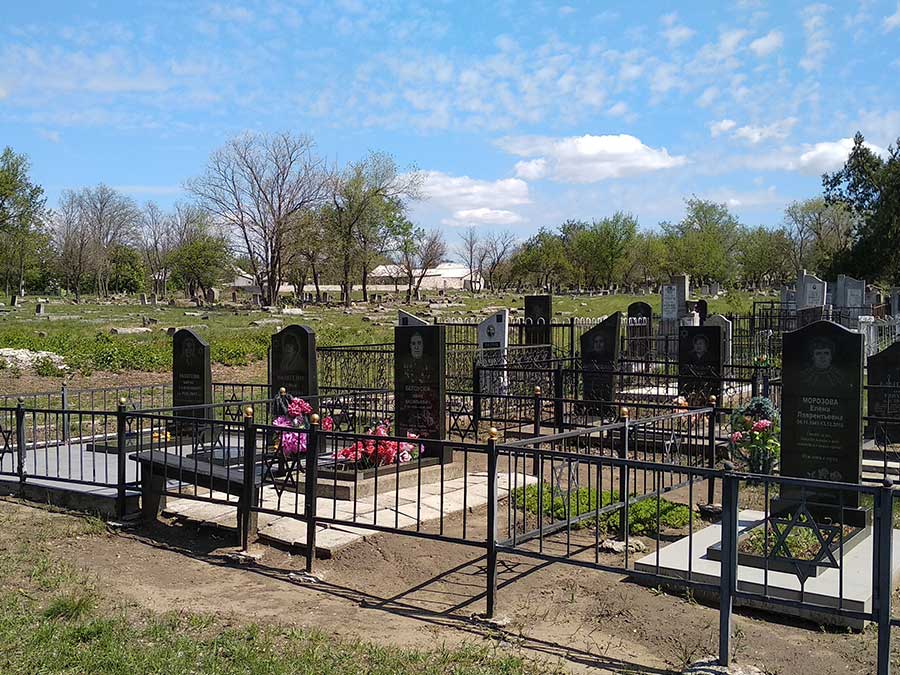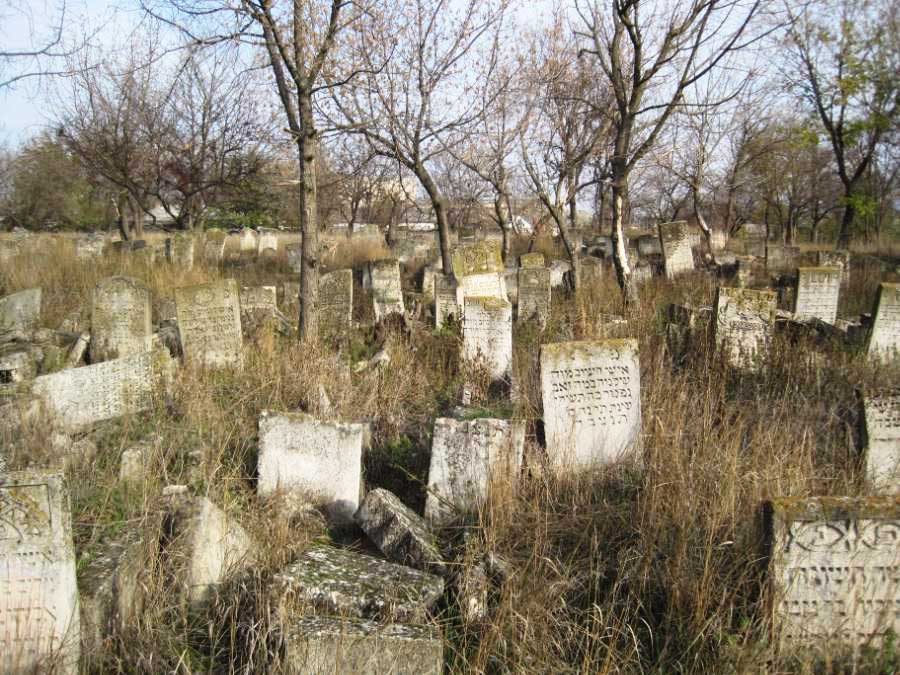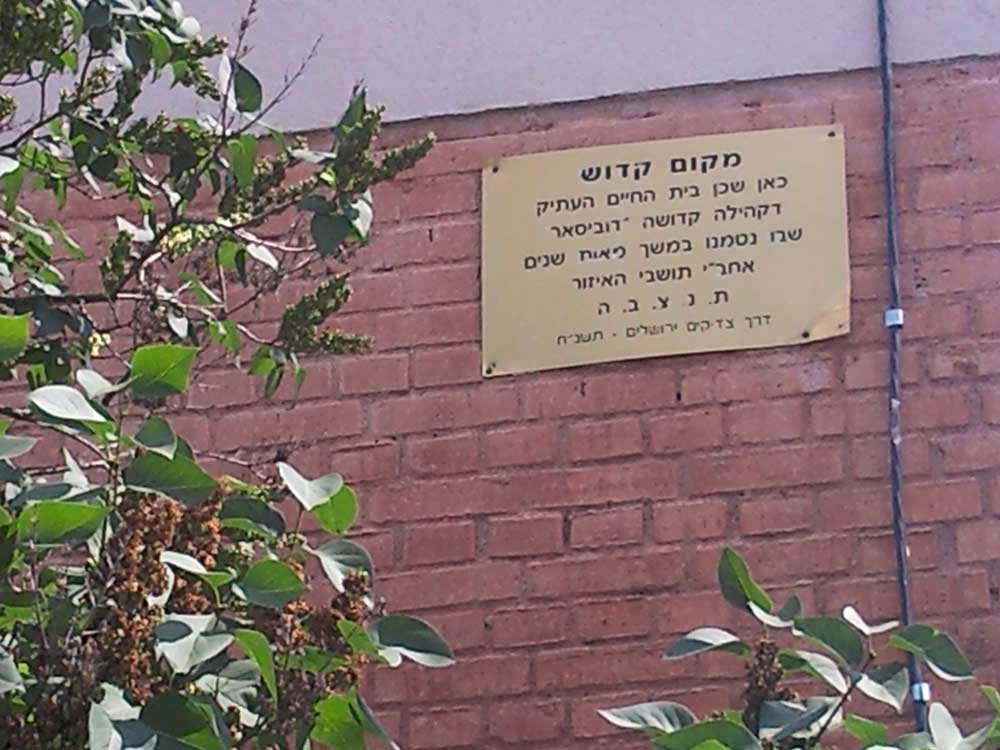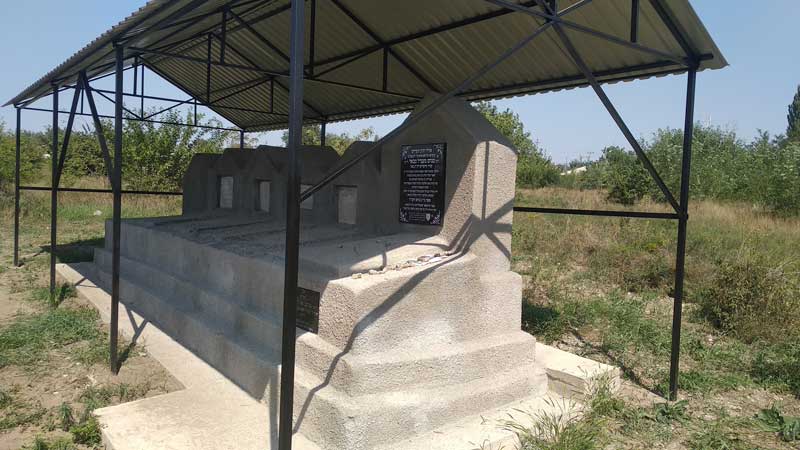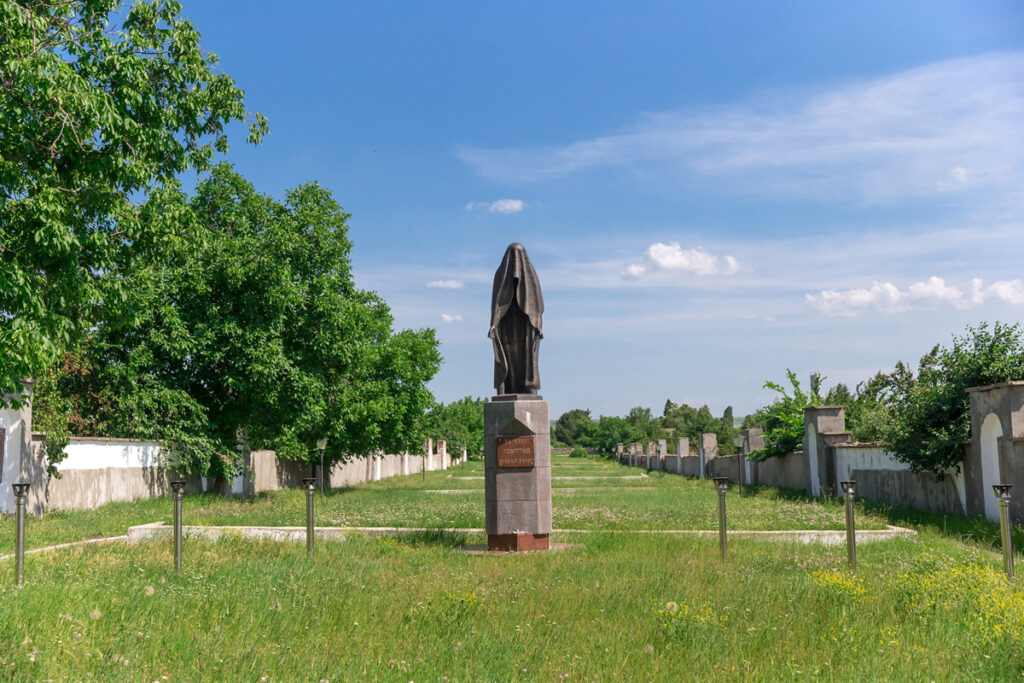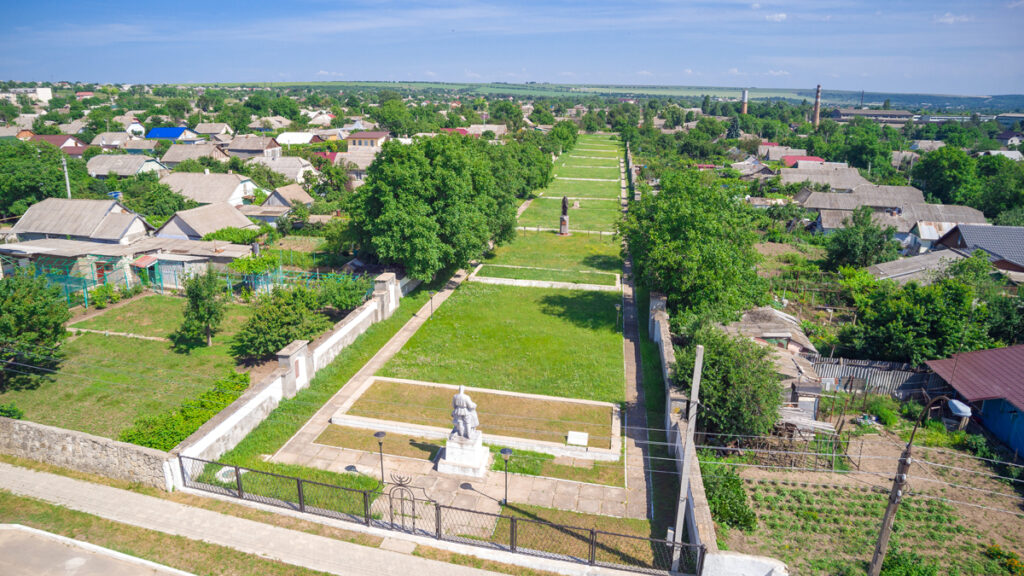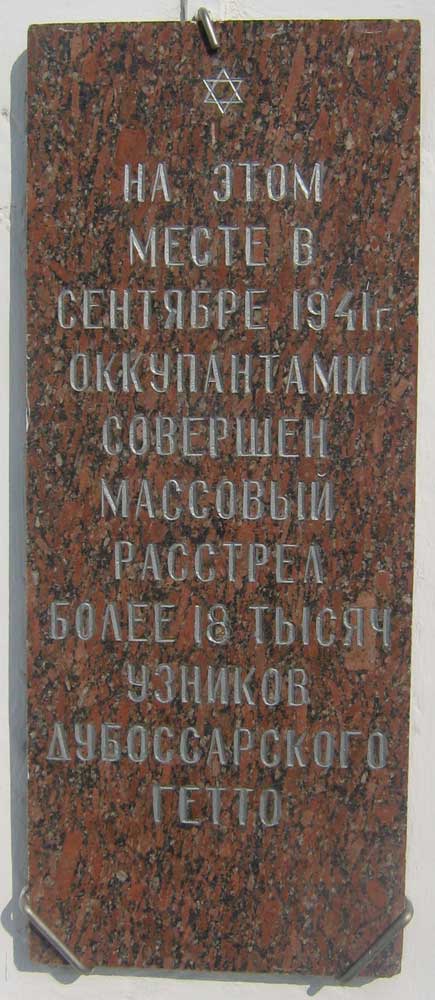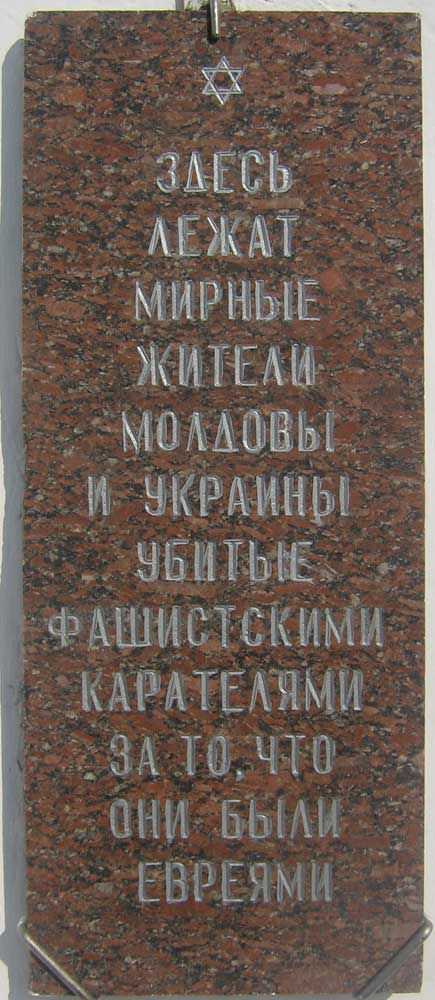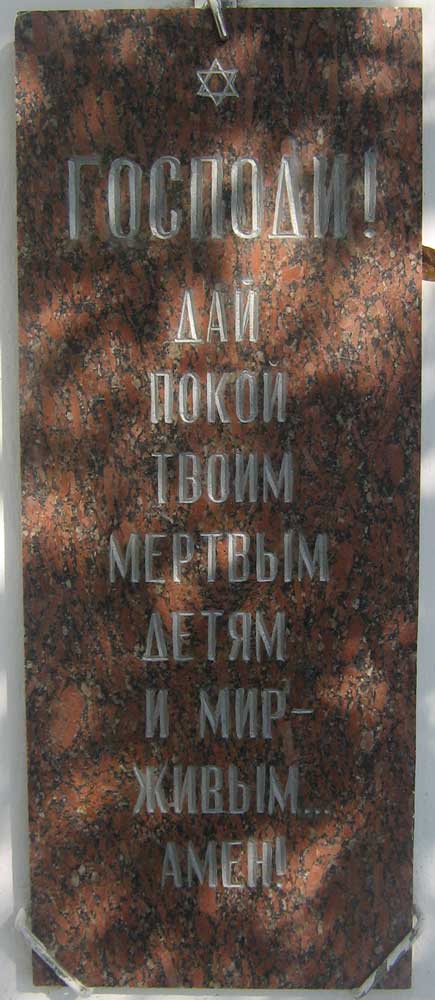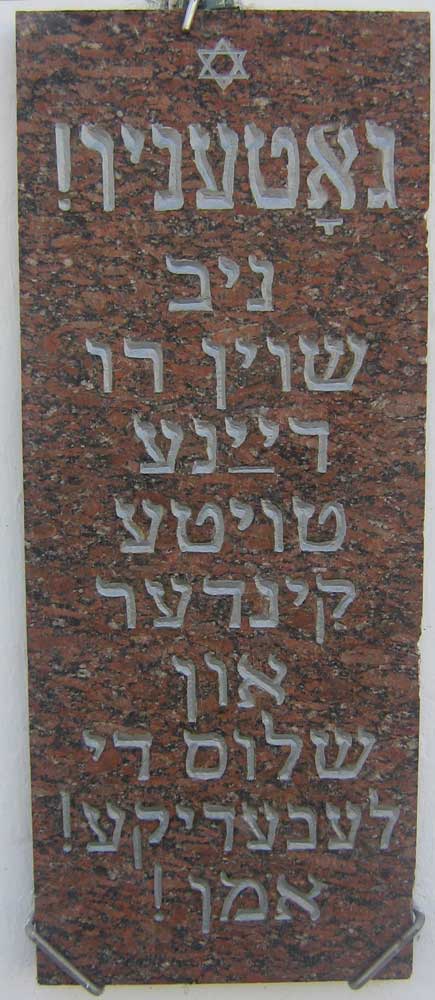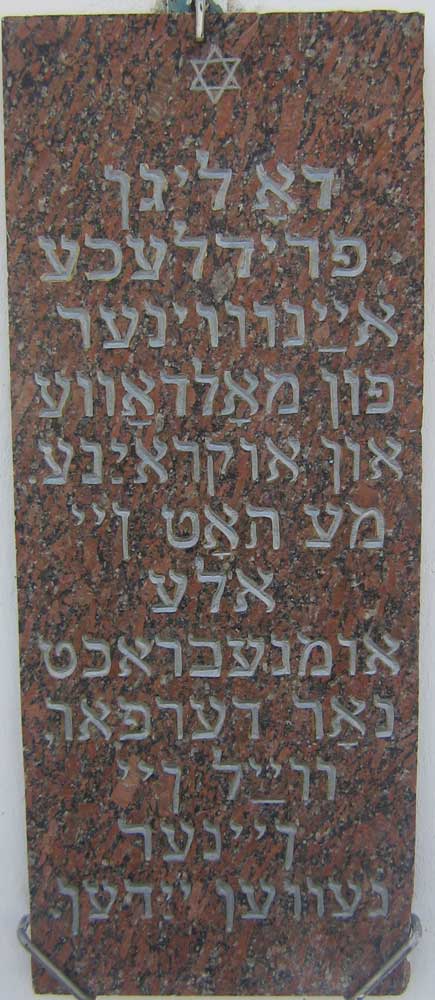Jewish community of Dubossary
One of the oldest Jewish communities in our region. The city has many places associated with the rich historical past of Jews on this land: the building of the former synagogue, the Jewish cemetery, the memorial complex.

According to data from the provincial statistical committee for 1861.
There were 7,207 residents (3,931 men and 3,276 women), including residents registered in the city according to the census: merchants - 509 (Christians 129, Jews - 380); townspeople - 4,635 (Christians - 2,472, Jews - 2,163; total - 5,144) (The economic state of urban settlements in European Russia in 1861-62. Ch.P. - St. Petersburg, 1863. - P. 26).
According to the 1897 census
The population of Dubossary exceeded 12 thousand people, of which 551 people were of the Orthodox faith and 441 people of the Jewish faith. And at the beginning of the 20th century, Dubossary was the second city in the left-bank Dniester region (after Tiraspol) in terms of population - 13.6 thousand people.
In 1920–22
Thousands of Jewish refugees from Ukraine passed through Dubossary to Romania. They were joined by many local Jews.
In 1926
In Dubossary, 3,630 Jews lived (81% of the total population).
At the beginning of the 20th century, the Dubossary Jewish community had a Talmud Torah (a religious educational institution for boys), nine cheders (a basic elementary school in the traditional Jewish education system), and four private Jewish schools.
In 1941
The number of Jews increased to 8,000. In June 1941, about 1,300 Jews from Dubossary joined the Red Army, and some joined the partisan detachment led by Ya. Guzinyatsky and A. Darfman.
In the 1960s
According to some sources, about 150 Jews lived in Dubossary. Through their efforts, in 1956, with funds collected both in the USSR and abroad, a memorial was created at the site of the execution of Jews in Dubossary, “In Memory of 18,500 Soviet Citizens of the City of Dubossary,” with texts in Russian and Moldovan.
The inscription in Hebrew, as well as the indication that the victims of Nazism were Jews, were banned by the Soviet authorities.
The building of the former synagogue.
Address: Dubossary, Kirov street, 197.
The two-story building was built in the first half of the 19th century using private donations from the Jewish community. A small building, a mikvah for ritual ablution, has been preserved in the courtyard. The synagogue functioned for its intended purpose until 1933. After nationalization, the building has housed state organizations to this day.
Jewish cemetery.
Address: Dubossary, Lomonosov street, 25.
One of the oldest cemeteries in the city contains about 2,000 old graves, as well as 250 burials that were made after 1945. Of the old tombstones, 150 have been identified. The oldest burial dates back to 8 Adar, 5587 (Jewish calendar), which corresponds to 7 March 1827 of the Gregorian calendar.
Destroyed old Jewish cemetery.
Address: Dubossary, Kotovsky st., 82
The old (second) Jewish cemetery was destroyed in 1950-1955 during the construction of a hydroelectric power station on the Dniester River in Dubossary. Now the building of DOSAAF (auto club) is located on the site of the cemetery. According to old-timers, one of the oldest burials in this cemetery dates back to 1616. The city knew the legend that the grave contained a bride and groom who died on their wedding day. A plaque near the DOSAAF (auto club) building on the site of the old Jewish cemetery reads:
A holy place. Here is the ancient cemetery of the holy community of Dubossar, where our Jewish brothers, residents of the region, have been buried for hundreds of years. May their souls be bound together in the knot of life. Derech Tzadikim Jerusalem 5758 (1997/98)
Tomb of Rabbi Menachem Mendel
12 Sivan is the day of remembrance of the great righteous Rabbi Menachem Mendel of Bar.
One of the greatest disciples of the holy Baal Shem Tov. In the Hasidic tradition he is known as the Maggid of Bar.
Rabbi Menachem Mendel belonged to the inner circle of the Baal Shem Tov’s closest disciples – היכלא קדישא – and studied with him along with his friends:
- by Rabbi Nachman of Gorodenka
- and Rabbi Nachman of Kasov
At first he was one of the leading sages and preachers in the Brody kloyz, and then he became attached to the Baal Shem Tov with all his heart. The teacher held him in high esteem and often praised him. Once he said:
“He is as great as I am, and only the thickness of a hair separates us…
But even this thickness he will never be able to overcome."
In a letter discovered several years ago in the Kherson Geniza, the Baal Shem Tov calls him by exalted titles that reach to the very heavens. On the first Saturday after Rabbi Menachem Mendel was appointed Maggid in the city of Bar, the Baal Shem Tov himself came there for Shabbat – as a sign of respect and love for his student.
The Maggid of Bar had a special closeness to the teacher - permission to ask him about everything, which was rarely given to anyone (this is mentioned in the book Maamar Mordechai, p. ה).
Participation in the development of Hasidism
According to Hasidic tradition, it was he who convinced the Maggid of Mezrich to go to the Baal Shem Tov. This happened after Rabbi Menachem Mendel visited Turchin, where he saw the Maggid teaching his students and was deeply impressed. Upon learning of the Maggid's painful legs, he advised him to go to the Baal Shem Tov for healing. At first, he refused, but after persuasion from his wife, he went to Mezivosh - and subsequently became the main successor of the teacher.
Teaching
In the book Toldot Yaakov Yosef, a fundamental Hasidic principle is cited in his name:
The highest level of any action is to perform it lishma, in the name of Heaven,
without any additional purpose, even if it is holy.
For example, when delivering a moral lesson or a reproach, one should not try to “convert” a person -
You just need to fulfill the commandment as the Torah commands.
Death
Rabbi Menachem Mendel of Bar died on 12 Nisan 5525 (5 April 1765) and was buried in the city of Dubossary, according to his own will.
Memorial Complex "To the Victims of Fascism"
Address: Dubossary, Z. Kosmodemyanskoy st., 22a
Pain and sorrow pierce the heart of every resident of Dubossary when it comes to the Holocaust – the genocide of European Jewry during the Second World War.
More than 18,500 doomed residents of the cities of Chisinau, Tiraspol, Bender, Orhei, Grigoriopol, Dubossary, Rybnitsa, Balta, Kotovsk, Krasnye Okna and other regions of Moldova and the Odessa region of Ukraine were left lying in 11 mass graves. All these people were shot by the fascists only because they were Jews.
This place, called Dubossary Babi Yar, is the largest mass grave of Holocaust victims in the entire nearby territory of Transnistria, Moldova and Odessa Oblast of the Republic of Ukraine. The total area of the memorial complex is about 5800 square meters.
The author of the memorial project is the famous architect S.M. Shoikhet.
A 2.5-meter-high bronze figure is installed on a pedestal. The author of the model of this sculpture is the famous sculptor Lazar Dubinovsky, and the sculptor Sergey Ganenko brought it to life. The sculpture is a praying Jew dressed in a tallis (prayer robe). We will never be able to answer the question "For what?", engraved on a granite slab in three languages - Russian, English and Hebrew. Six torches of eternal flame, located nearby, symbolize the 6 million Jews exterminated during the Holocaust. The creation and installation of the monument could not have happened without the sponsorship of the patron of the arts from St. Petersburg Avram Goldemberg. The opening of the monument took place in 2017.
At our Memorial Complex "To the Victims of Fascism", thanks to the enthusiasm of many, now deceased, active members of the Dubossary Jewish community, it was possible to establish and immortalize 3,000 names on granite slabs. It is impossible to read without shuddering this endless list of ruined lives and the words carved on granite slabs in Yiddish and Russian.
Address: Dubossary, Lomonosov st., 30
Chairman: Ukshteyn Ozias Borisovich
Telephone: +373 777 40042

